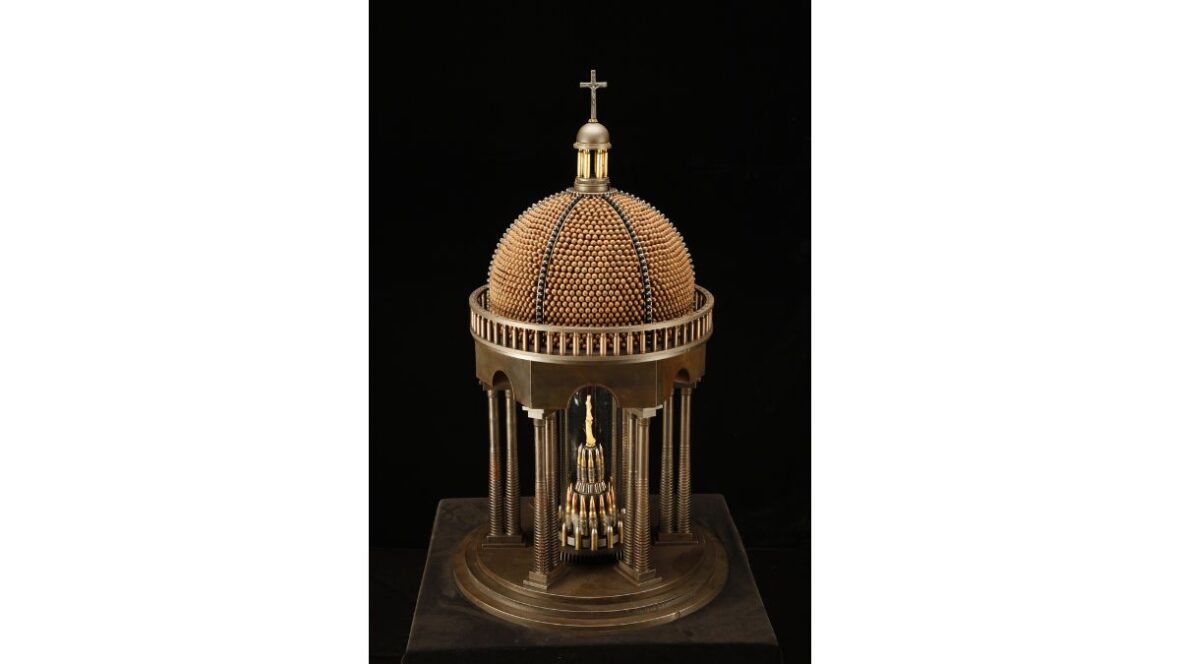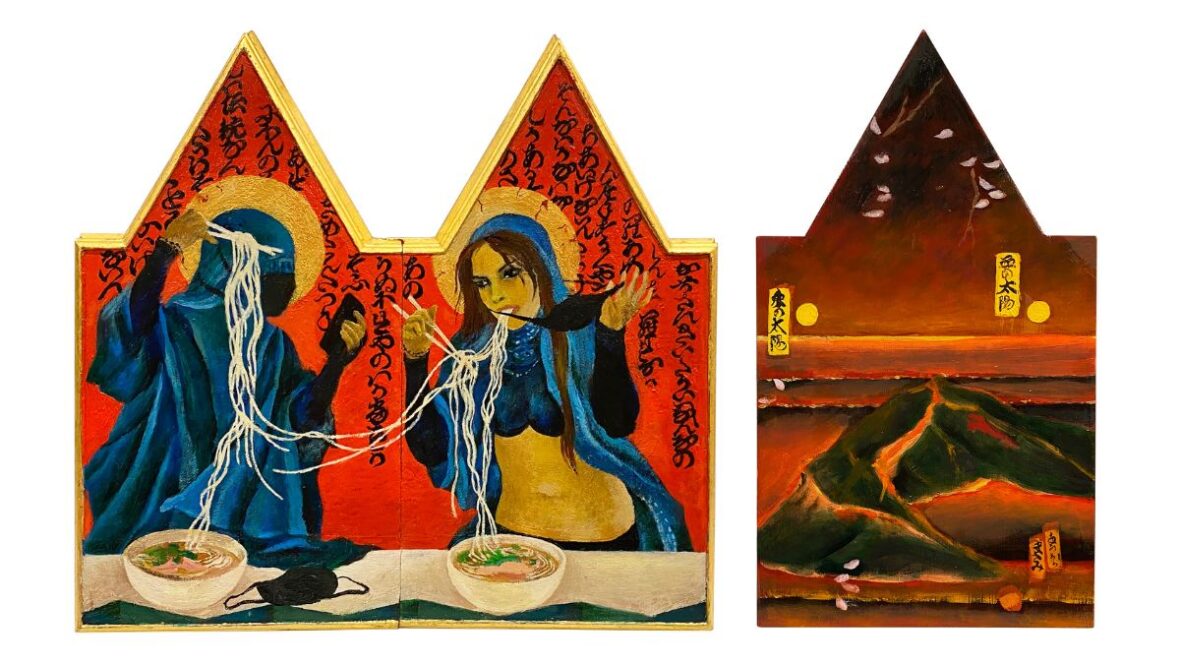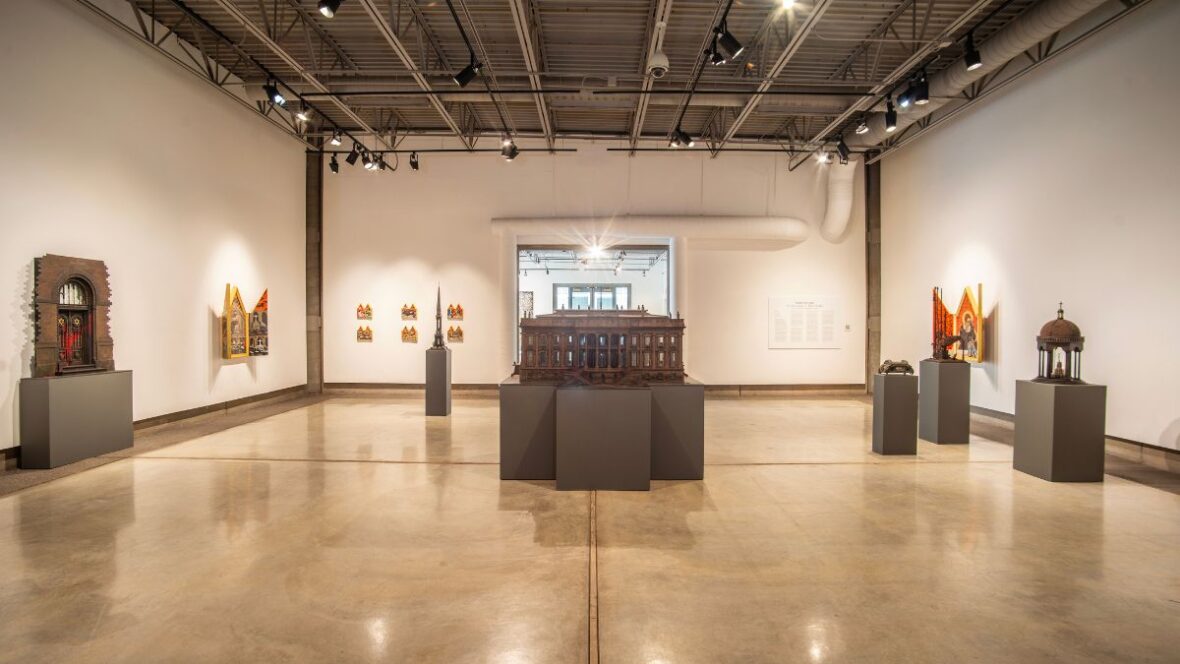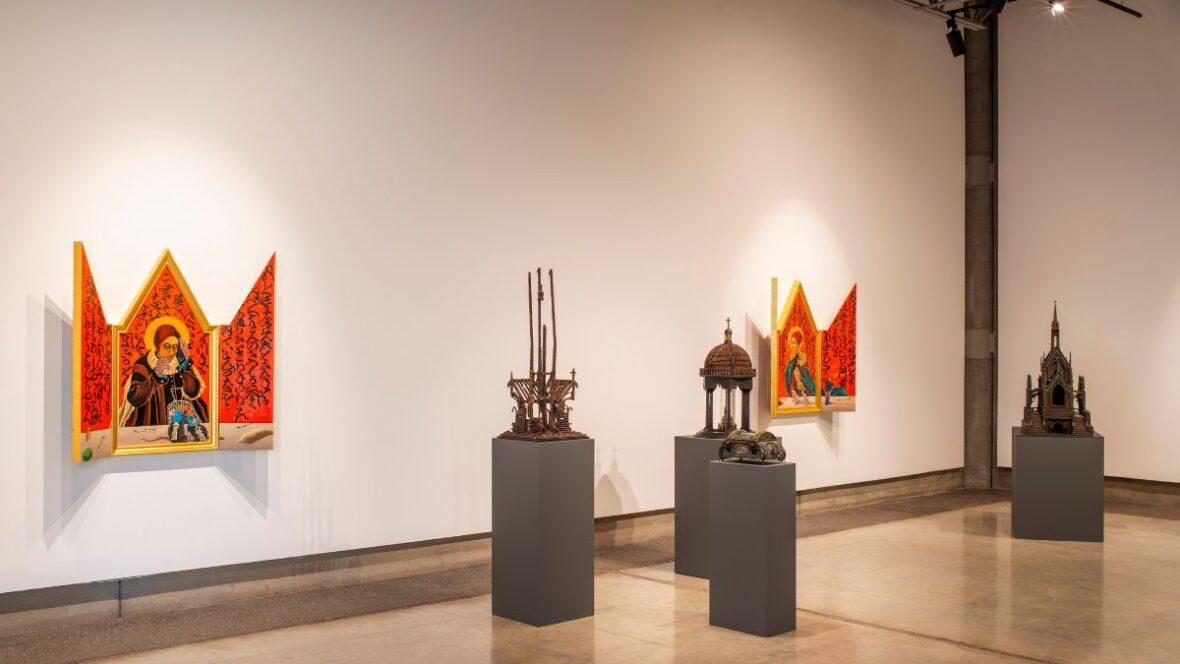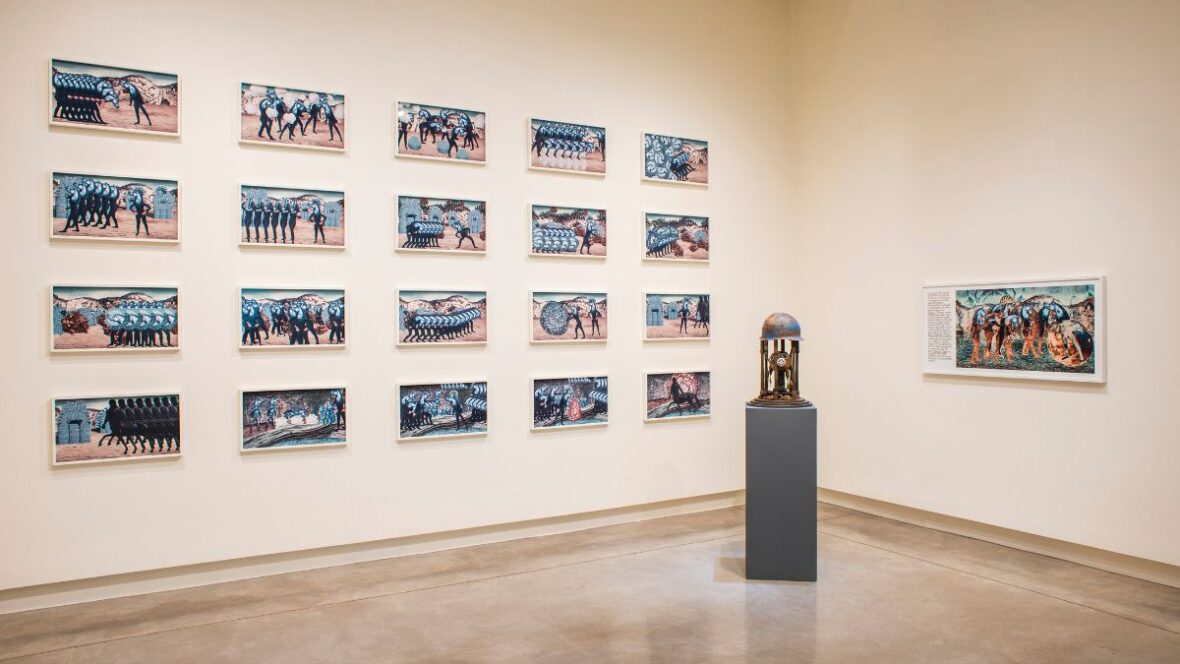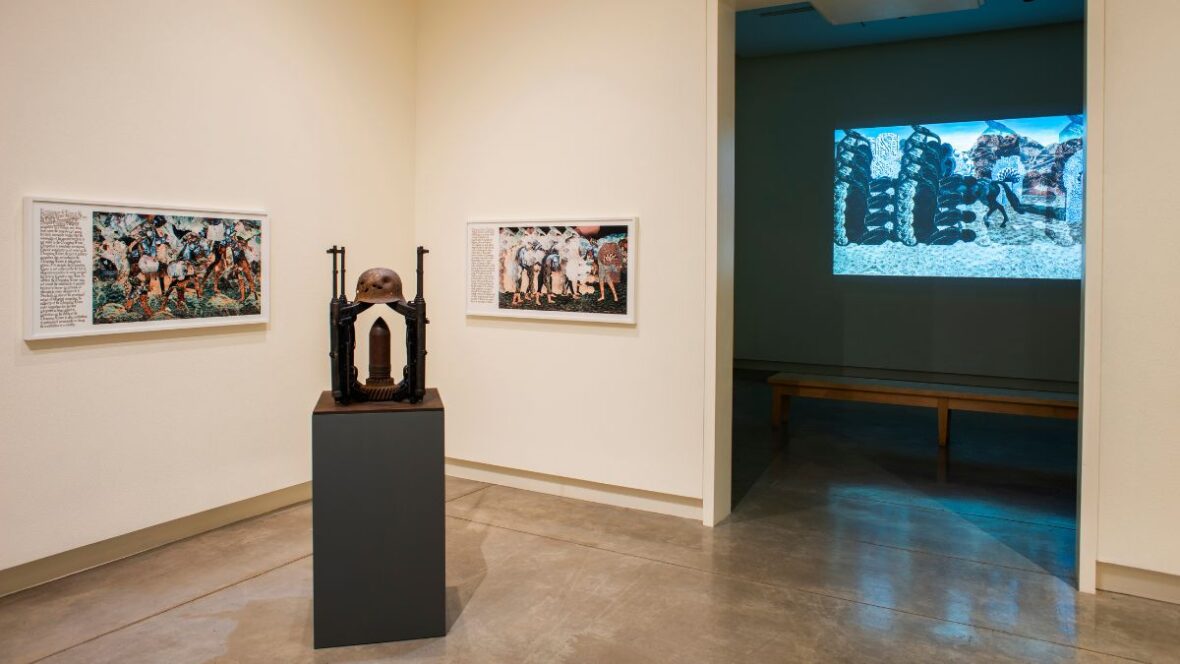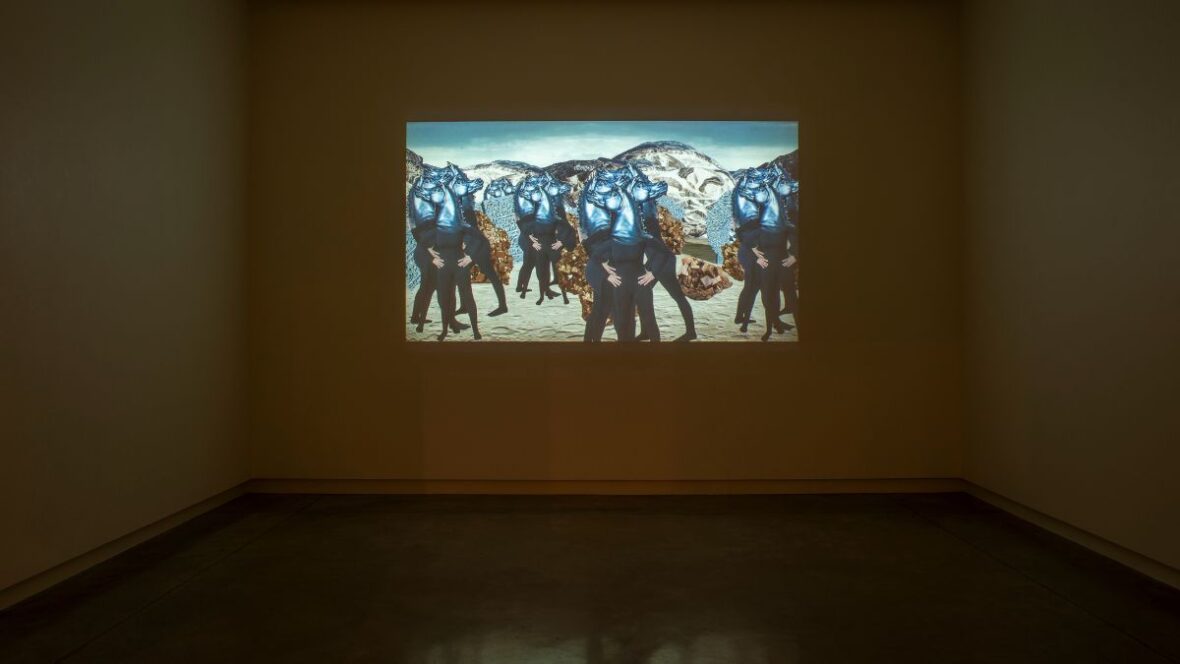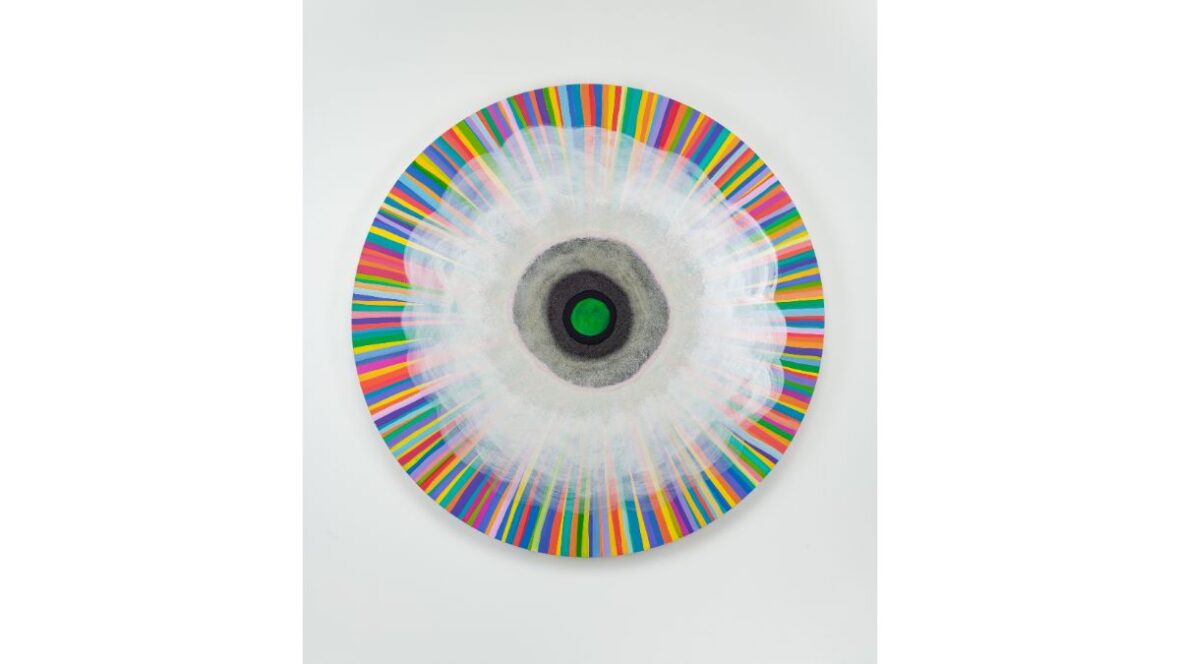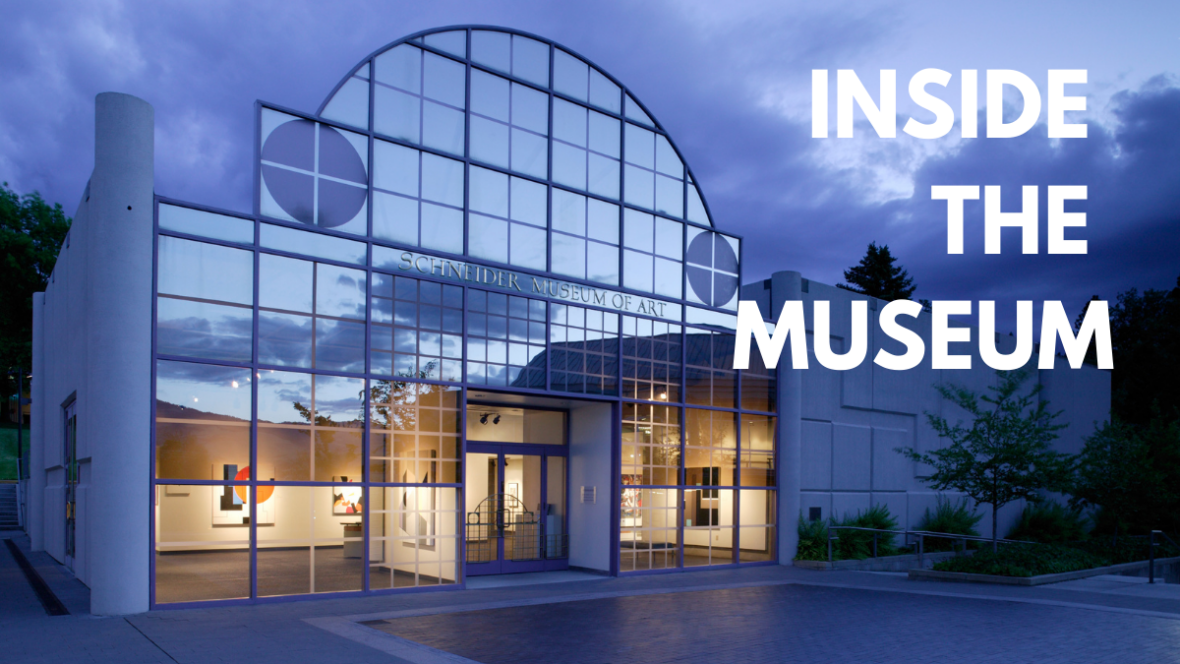What’s at Stake
From SMA Executive Director Scott Malbaurn
On a recent Schneider Museum of Art (SMA) trip to San Francisco, CA with SMA members, we visited what was billed as three solo exhibitions at the Catharine Clark Gallery, showing work by Masami Teraoka, Al Farrow, and Zeina Barakeh. My first thought was, “this is a museum exhibition.” It occurred to me that each of the artists were considering the impact of war—a milieu in which two of the artists had been raised, Masami Teraoka in Japan during WWII and Zeina Barakeh in Lebanon during civil war. Al Farrow had indirect experience with war and violence having been born in the US during WWII; coming of age during the protest and civil unrest of the 1960s and 70s, and having been at risk for conscription during the Vietnam era. It made sense for the SMA to re-present the shows as a group exhibit titled What’s at Stake, a question and statement made more relevant by violent events in Ukraine and the Middle East.
Catharine Clark is a gallerist who has become no stranger to the Schneider Museum of Art. We first met through our Ashland Independent Film Festival (AIFF) collaborative exhibitions when then AIFF Artistic Director Richard Herskowitz selected artwork by an artist represented by Catharine Clark’s gallery to exhibit at the SMA. From there, additional exhibitions included artworks by artists also represented by the gallery. This repeat is not a usual one—it is testament to a vision Catharine Clark and her team have of representing artists who make meaningful artworks full of culturally cogent content. We are so grateful to Catharine Clark, her team, and the artists for allowing and assisting us in receiving and sharing these artworks with our audiences.
About the Exhibition
Investigating pressing issues of our time; mechanisms of war, colonialism, interrogating the unpredictability and legitimacy of armed conflict. Including the devastating impacts of war; human rights violations; and environmental collapse. The exhibition presented holds these artists in conversation with one another, powerfully asking us to pause and reflect on our collective responsibility to one another, and ask what’s at stake when we allow violence to go unchecked.
Al Farrow’s now-iconic “Reliquaries”series – featured in the multi-venue traveling survey exhibition “Al Farrow: Divine Ammunition” (2015-2019) – casts a striking visual commentary on the contemporary political climate, religion, war, history, culture, and faith. Intricately crafted from munitions and guns, Farrow’s sculptures draw on the tension between religion and violence, peace and brutality, and the sacred and the unholy. Farrow’s recent sculptures include reliquaries to Santo Guerro, Farrow’s invented “god of war” whose likeness has been reduced to stray relics – the bones of a middle finger or two thumbs – that both evoke a macabre and gothic humor while reminding us of the very real human costs of war. These new sculptures also feature secular reliquaries like “LEGACY” (2021/2022), in which a rusted blue helmet – a reference to the United Nations – perches over a child’s gas mask, with ammunition strewn around the base. Through this unsettling juxtaposition, Farrow opens his critique to non-faith-based institutions that, while ostensibly meant to protect our human rights, are also culpable of violence through inaction.
In a career spanning over six decades, Masami Teraoka’s work has engaged topics such as HIV/AIDS, the contamination of environments and landscapes, and the tensions around immigration/assimilation between Western and non-Western cultures. Acclaimed for his contemporary reimagining of traditional Japanese Ukiyo-e, Teraoka’s work since the early 1990s has also referenced the baroque and gilded paintings of Western Renaissance art, with its highly detailed and often disturbing depictions of Christian allegory and parables. In recent works, Teraoka reincorporates figures and motifs from Ukiyo-e, such as geishas and torii gates, into his compositions. In revisiting the dreamlike forms of Ukiyo-e – a term that traditionally translates into English as “floating world” – Teraoka also reflects on a less familiar translation of the term as “contemporary suffering,” a tension that, for Teraoka, locates his work at the intersection between imagination and social commentary. In 2017, Teraoka began creating work in tribute to the Russian activist and performance group Pussy Riot, whose members have been imprisoned by the Russian state for their protests against injustices enacted by President Vladimir Putin’s authoritarian government. Teraoka’s recent triptychs feature Pussy Riot as characters in a surreal drama in which figures like Putin appear as sinister antagonists in 16th century inspired costume, a nod to the grotesque performativity of the human rights violations and military hostilities currently being played out on our world stage. The newest works on view, completed in Spring 2022, directly respond to the crisis in Ukraine, depicting landscapes overrun with corpses and tanks, demolished buildings, and skies streaked red by fire and destruction, an apocalyptic foretelling of existence torn apart by war. Teraoka’s recent paintings also explore his memories of witnessing the bombing of Hiroshima as a child in Onomichi, Japan – a city 45 miles away from Hiroshima – in which Teraoka, then nine years old, observed “two suns” in sky on the day of the blast, one coming from the east and another from the west. This unnatural image of the explosion imprinted upon Teraoka’s consciousness, and in collapsing a wartime past with the calamities of the present day, Teraoka implores his viewers to consider how a seemingly ordered world can be perilously thrown out of balance by forces beyond our control – viruses, fires – as well as those firmly within it.
Born in Beirut, Zeina Barakeh is a Palestinian-Lebanese artist whose work is influenced by her upbringing amidst numerous conflicts in Lebanon. While her artwork broadly engages with the discourse of war, her research delves into military emerging technologies, the blurred boundaries between humans and machines, and the evolving nature of warfare, encompassing kinetic and cyberwarfare. She additionally explores the principles and laws that guide and regulate warfare, probing the media’s role in shaping war narratives and employing disinformation campaigns. Through her multifaceted approach, Barakeh offers a nuanced perspective on the interconnected aspects of conflict.
The colonizing Centaur, a central figure in her animations, originates from a 1933 archival image captured in Jaffa Square, depicting mounted soldiers of the British Mandate of Palestine (1920–1948) confronting Arab demonstrators. The photograph’ s graininess merges the horse and its British rider, inspiring the concept of the Centaur as the symbol of colonization, in struggle with the Horses who, as stand-ins for colonized subjects, embody agency and resistance. Barakeh’s painstaking animations, simultaneously humorous and unsettling, invite a deeper consideration of how we relate to histories of imperialism and their manifestations in our present-day.
